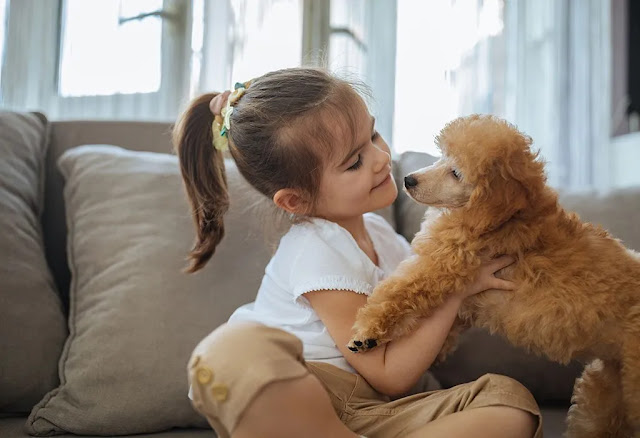Introduction
Socialization is a vital aspect of pet ownership, significantly impacting your pet's behavior, confidence, and overall well-being. By exposing your pet to various environments, people, and animals, you can help them become more comfortable and well-adjusted, leading to a happier and healthier pet. In this article, we'll discuss the importance of pet socialization and provide tips to ensure your furry friend thrives amongst others.
Why is Pet Socialization Important?
Proper pet socialization can have a profound impact on your pet's behavior and quality of life. Here are some key reasons why pet socialization is crucial:
Reduced Anxiety and Fear: Socialized pets are less likely to experience anxiety or fear in unfamiliar situations. Exposure to new environments and people at an early age helps them develop confidence.
Improved Behavior: Socialization helps pets learn appropriate behavior, reducing the likelihood of aggressive tendencies or excessive fear. Well-socialized pets tend to be well-mannered and easier to handle.
Enhanced Adaptability: Exposure to various environments, sounds, and sights helps pets adapt to changes in their surroundings. This is particularly beneficial for pets that may need to relocate or travel.
Better Health: Socialization can lead to a healthier pet by reducing stress and anxiety levels, which in turn can boost the immune system and overall well-being. like pets dental health should also be in mind and how to take care of dental health.
Tips for Effective Pet Socialization
Here are some tips to ensure successful pet socialization:
1. Start Early
Begin socializing with your pet at a young age, preferably during their critical developmental periods. For puppies, this typically starts around 3-14 weeks of age. Kittens also benefit from early socialization.
2. Gradual Exposure
Introduce your pet to new experiences gradually. Start with familiar environments and gradually expose them to various settings, people, and other animals. This gradual approach helps prevent overwhelming your pet.
3. Positive Reinforcement
Use positive reinforcement techniques, such as treats, praise, or toys, to reward your pet for good behavior during socialization experiences. Positive associations encourage a positive attitude toward new situations.
4. Controlled Environments
Initially, choose controlled and safe environments for socialization, such as a friend's house, a calm park, or a well-maintained pet-friendly facility. Ensure that the environment is free from potential hazards.
5. Vet Check-ups
Before beginning the socialization process, ensure your pet is in good health. A visit to the vet will help confirm that your pet is ready for socialization and has received the necessary vaccinations.
6. Professional Training
Consider enrolling your pet in a reputable training class or hiring a professional trainer. Training classes provide structured socialization experiences under the guidance of an expert.
7. Monitor and Adjust
Observe your pet's reactions and body language during socialization. If your pet appears stressed or frightened, adjust the intensity or duration of the interaction to a more comfortable level.
Unlocking Pet Happiness: The Art of Effective Pet Socialization
Pet socialization is akin to a golden key that unlocks the door to your pet's happiness and well-being. As a responsible pet owner, integrating this fundamental practice into your pet's life is paramount. The process entails introducing your beloved furry friend to diverse experiences, people, and environments in a gradual and controlled manner. This exposure empowers your pet, ensuring they grow into a confident, well-rounded companion. In this article, we will delve into the art of effective pet socialization, highlighting its importance and providing valuable insights on how to enhance your pet's quality of life through strategic approaches.
Understanding the Power of Socialization
Socialization is a powerful tool that can significantly influence your pet's overall demeanor and happiness. It's a deliberate and systematic process that involves exposing your pet to a spectrum of stimuli, such as different settings, individuals, and fellow animals. This exposure helps inculcate adaptability, diminishes anxiety, and cultivates appropriate behavior, leading to a harmonious coexistence with their environment and companions.
Starting Early: A Crucial Foundation
Commencing the socialization journey early in your pet's life is the foundation of success. The critical developmental periods, usually between 3 to 14 weeks for puppies and a similar time frame for kittens, offer a window of opportunity to shape positive behavioral patterns. During this period, your pet is more receptive to new experiences and tends to retain them throughout their life.
Emphasizing Positive Reinforcement
Positive reinforcement forms the cornerstone of successful pet socialization. Utilizing rewards like treats, affectionate praise, or engaging toys during socialization experiences reinforces positive behavior. This conditioning creates a positive association, encouraging your pet to embrace new encounters with enthusiasm and confidence.
The Art of Gradual Exposure
Gradual exposure to various stimuli is the key to a successful socialization process. Start with familiar environments, like your home or garden, and progressively expose your pet to different surroundings, sounds, and individuals. Avoid overwhelming your pet by carefully managing the intensity and duration of these exposures, ensuring a comfortable and positive learning experience.
Crafting a Well-Rounded Companion
By adhering to the principles of early initiation, positive reinforcement, and gradual exposure, you pave the way for your pet to thrive amongst others. The result is a pet that embodies adaptability, confidence, and appropriate behavior—a well-rounded companion bringing joy and fulfillment to your life.
Conclusion
The art of effective pet socialization holds immense potential to shape your pet's happiness and overall quality of life. Commencing the process early, utilizing positive reinforcement, and providing gradual exposure are crucial building blocks. These strategic steps lead to a pet that not only survives but thrives in a world filled with diverse experiences. Every wag of their tail and purr of contentment serves as a testament to the beautiful journey of pet socialization—nurturing a cherished bond between you and your furry companion.
Also Read:


















0 Comments